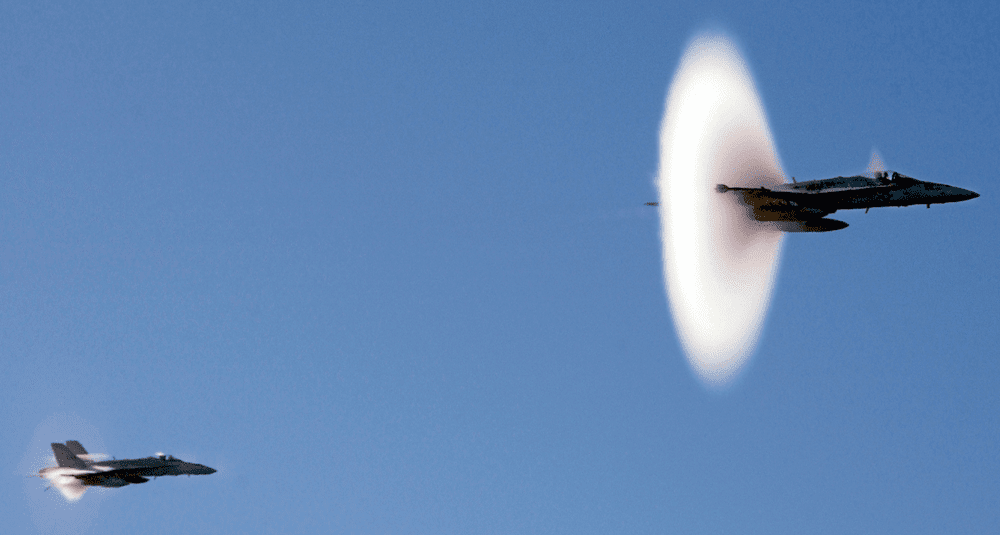Which experimental plane broke the sound barrier on October 14, 1947?
Last Updated:
The experimental aircraft that first broke the sound barrier on October 14, 1947, was the Bell X-1, a revolutionary aircraft designed in the United States. This historic flight, piloted by Captain Charles “Chuck” Yeager, marked an important milestone in aviation history and paved the way for the era of supersonic flight.
The Bell X-1 was part of the X-Plane program, a series of experimental aircraft developed after World War II by the NACA (National Advisory Committee for Aeronautics, the predecessor of NASA), the U.S. Air Force, and the Bell Aircraft Corporation. The goal of these projects was to explore the limits of high-speed flight and understand the aerodynamic phenomena associated with the sound barrier.
The sound barrier refers to the difficulty encountered by an aircraft as it approaches the speed of sound, which is approximately 760 mph (Mach 1) at sea level. Before 1947, many pilots had experienced severe vibrations, loss of control, and even destruction of their aircraft at these speeds. This phenomenon was called the “sound barrier” and was considered by many to be insurmountable.
The Bell X-1 was designed to meet this challenge. Its shape was inspired by a .50 caliber machine gun bullet, whose stability at high speeds was well known. The aircraft was powered by a Reaction Motors XLR11 rocket engine, capable of providing approximately 2,700 kg of thrust thanks to four combustion chambers fueled by alcohol and liquid oxygen.
Its all-metal structure was designed to withstand high aerodynamic stresses. The cockpit was pressurized, an innovation at the time, and the pilot had to wear a special pressurized suit. The Bell X-1, nicknamed “Glamorous Glennis” by Chuck Yeager in honor of his wife, could not take off on its own: it was carried to high altitude under the belly of a B-29 bomber, then dropped before firing its rocket engine.
On October 14, 1947, at an altitude of about 13,000 meters above the Mojave Desert (California), Chuck Yeager made this historic flight. After separating from the B-29, he fired the X-1’s engines and gradually accelerated. At 1,126 km/h, or Mach 1.06, he broke the sound barrier for the first time in human history. This moment was invisible to the naked eye, but a sonic boom was heard by observers on the ground, confirming the success of the feat.
This flight marked a technological turning point. It proved that supersonic flight was possible and provided a better understanding of the physical effects of exceeding Mach 1: air compression, shock wave formation, and aircraft stability at these speeds. The data collected from the Bell X-1 was essential for the design of future fighter jets and high-performance civil aircraft.
Following this success, several variants of the Bell X-1 were developed, including the X-1A and X-1E, capable of reaching even higher speeds of up to Mach 2.4. These programs helped refine knowledge of supersonic flight dynamics and improve the safety of modern aircraft.
The Bell X-1 remains a symbol of courage and innovation to this day. The original aircraft, named Glamorous Glennis, is on display at the National Air and Space Museum in Washington, D.C., alongside other aviation icons. As for Chuck Yeager, his name has become legendary: his achievement has inspired generations of engineers, pilots, and aviation enthusiasts.
On October 14, 1947, the Bell X-1 became the first aircraft to break the sound barrier, piloted by Chuck Yeager. This event marked the beginning of a new era, that of supersonic flight, and made the Bell X-1 an essential milestone in the history of global aviation.
sciences

Which experimental plane broke the sound barrier on October 14, 1947?
Answer
The Bell X-1, an American experimental aircraft piloted by Chuck Yeager, broke the sound barrier for the first time on October 14, 1947.